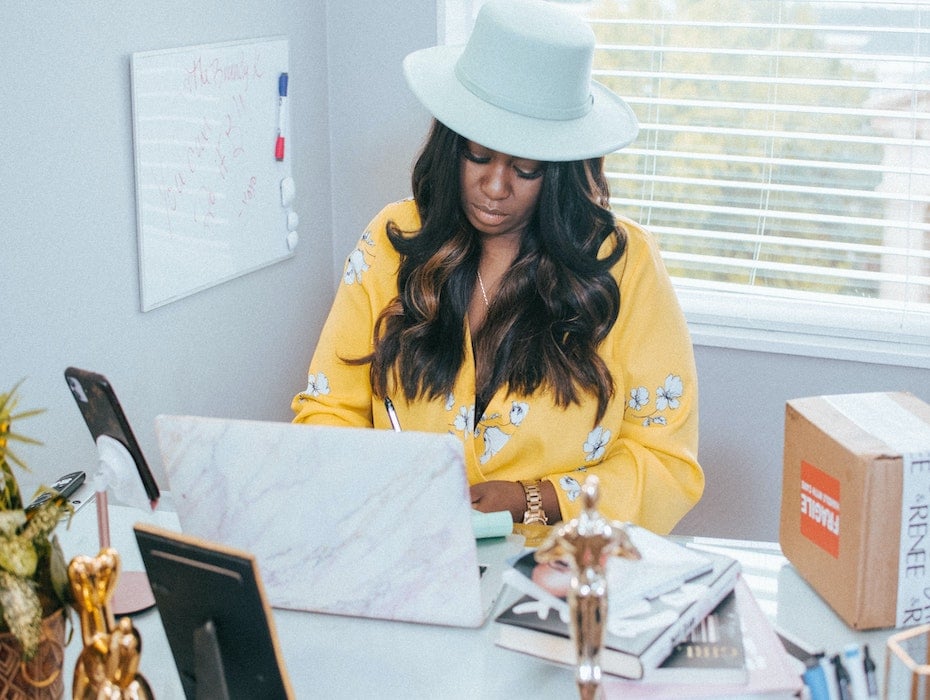When Shonda Rhimes broke into the world of television writing, she discovered a workforce that looked very different from her.
In the early-2000s, she wasn’t just a black, female showrunner in the industry, she was the only black, female showrunner. Years later, in her memoir Year of Yes, she dubbed her position of uniqueness as being a F.O.D. — “First. Only. Different.” That distinction meant she bore more than the normal workload most other showrunners experienced — as well as all the pressure of running a TV show people looked to her as a representative for black writers and female showrunners everywhere.
“[W]hen you are an F.O.D., you are saddled with that burden of extra responsibility — whether you want it or not,” Rhimes wrote in Year of Yes.
During her time working in television, she got to know the other F.O.D.s running network shows. All shared her experience: the same pressures, responsibilities, and prejudices.
While Rhimes had a platform to share her experience, many others suffered in silence and many still do.
For instance, consider that countless industries are still dominated by men. More than 95% of firefighters, 92% of aerospace engineers, and 90% of construction workers are male. In each male-dominated company, organization, and team, one woman must become the F.O.D. en route to a more diverse future. And like Rhimes, they will need to bear all the burdens that come with it.
Or perhaps not.
For some women, the pandemic has been a silver bullet to the pressures of being an F.O.D. Working from home, they were no longer the women in the office. They were a screen name on a work chat platform or a signature at the end of an email. Without the extra burden, women have thrived.
One small step for a woman
Every female employee deals with pressures and burdens in the workplace that their male colleagues do not. Companies promote women at a slower rate than men, forcing women to work harder for an equal reward. They experience higher instances of burnout. They’re more likely to experience sexual harassment. Even their very personal qualities get held to different standards.
When the Pew Research Center polled Americans on society’s most valued traits, there was a clear divide between genders. Two-thirds of respondents said men should be powerful. More than 90% said women shouldn’t be. Strength was a positive trait in men, but a negative quality in women. Men should be ambitious. Women should be beautiful and maternal. The list goes on.
The Society for Women Engineers analyzed assertiveness specifically. “Women engineers were less likely than white men to say they could behave assertively (51% vs. 67%) or show anger without pushback (49% vs. 59%),” wrote the researchers.
Indeed, one female participant recalled a reprimand from her manager for “getting emotional” after raising her voice during a meeting. She said this occurred moments after two male leaders had gotten into a “yelling match” with no repercussions.
All those pressures are amplified when you are a F.O.D.
Consider Christian Sismone, a project manager for a health and wellness software company. As a woman of color working in an industry still ruled by straight white men, her experience was blighted by “microaggressions, anxiety and overperforming for very little to show for it.”
As the first and only person outside the homogeneous core, Sismone felt like “nothing more than a performer.” She describes her daily working experience as one of the “most mentally damaging” of her life.
“From racism, sexism, and classism, I have always been a person who is a F.O.D.,” she tells RingCentral. “This makes it very hard to connect with people, thus limiting my ability to gain access needed to scale up in my work.”
But the coronavirus pandemic changed everything.
As the virus spread around the world, companies began to close their offices. In early spring, Sismone’s employer followed suit. Overnight, her work moved online. She broke free of her office and set up shop at home. There, the enormous pressure of being a F.O.D. — of being the black woman in her team — melted away.
“By being online, the constant anxiety of just being me is eased,” she says. “I can breathe without worrying whether I was being too loud, and when I’m frustrated, I can let off steam without damaging my image.”
Behind a screen, Sismone feels she’s judged purely on the merits of her work, rather than the conscious and unconscious biases her colleagues hold. She feels less stressed and more at ease with her role. Free from the pressures others put upon her, she can turn her undivided attention to her work.
“Online collaboration allows for more focus as we are often trying to keep up with appearances at the cost of the work,” says Sismone.
But this is just the start. The benefits of remote working go far deeper, says Sismone. Working from home isn’t a simple band-aid to the challenge of diversity. It doesn’t merely help diverse employees feel safer. Rather, it helps dissolve the prejudices and discrimination that create hostile work environments in the first place.
“I believe that unless people want to hash things out, collaboration issues will remain like code behind the scenes,” Sismone says. “Most people, especially in this era, don’t like confrontation in person.”
Remote work offers a way to address and resolve tensions. If done well, Sismone says it creates a safe online space where people can dismantle institutional sexism, racism, and classism. As institutional discrimination fades, it will become easier for others to follow in Sismone’s and Rhimes’ footsteps.
Breaking the status quo
Creating a more inclusive workplace isn’t just an advantage for the individual. It’s a boon for the organization, too. Study after study reinforces the link between diversity and corporate performance. Instead of getting stuck in the status quo, diverse organizations approach challenges and opportunities with fresh approaches and strategies.
Research from McKinsey & Company reinforced the link between gender diversity and company financial performance.
“Companies in the top-quartile for gender diversity on executive teams were 21% more likely to outperform on profitability and 27% more likely to have superior value creation,” wrote the report’s analysts. “The highest-performing companies on both profitability and diversity had more women in line roles than in staff roles on their executive teams.”
Instead of sticking with the status quo, organizations should make it as easy as possible for F.O.D.s to disrupt homogeneous teams. And as people such as Sismone have discovered, remote work is a great first step.
“My goal is to find a company that is fully remote or one that allows me the best flexibility,” says Sismone. “I desire to do great work, make a handsome wage, and have the ability to tend to my needs without constant dread or fear.”
Start from the beginning of this series to read more on how women are thriving in their at-home work environments:
Chapter 1: Why achieving work-life harmony is more satisfying — and achievable — than balance
Chapter 2: How our new habits can — and should — work for us
Originally published Feb 12, 2021, updated Dec 30, 2022




